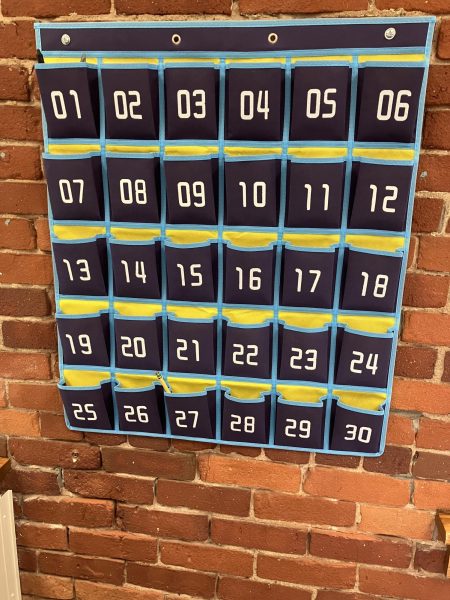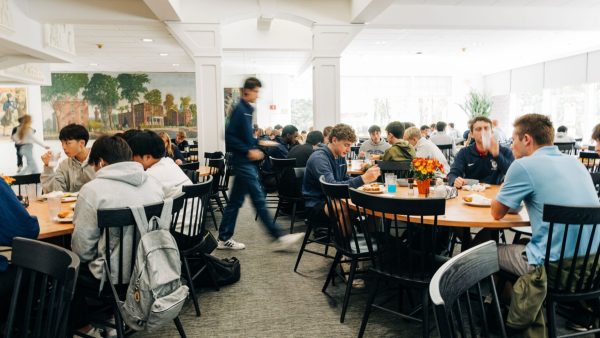CID: Inside Williston’s Identity Development Program
On November 22, 2013, Williston students and faculty members crowded the Dodge Room. They laughed, tapped their feet, and maybe even shed a tear, while watching faculty member Mr. Ryan Tyree share his life through song and storytelling. Upon reflection, Mr. Tyree says of the experience, “CID is something that makes me proud to work at Williston [and] a community like ours needs opportunities for individuals to speak out, find their voice, and draw strength from other members. Plus, stories are where it’s at.”
Tyree’s performance exemplified the growth that Williston’s Cultural Identity Development Program, known as “CID” on campus, has taken since its humble beginnings in September, 2010. The program’s founder, Ms. Bridget Choo, began CID by hosting storytelling nights in her apartment in John Wright, the freshman girls’ dorm. Since its launch, CID has migrated to the Cox Room of the Birch Dining Commons, where large audiences often pack in to enjoy dinner and hear stories.
Choo began her work with identity development in 1997 when she was the coordinator of Cultural Identity Projects at the Fort River Elementary School in Amherst, Massachusetts. Her responsibilities included coordinating teachers and facilitating an affinity group for female students. Choo states, “[I] initially learned about CID projects from my mentor, Professor Ernest Washington [at] UMASS Amherst. I was an undergrad in a [graduate] class about group counseling. I fell in love with it immediately, so I asked Ernie to sponsor me in creating my own major called multicultural education.”
This year, Choo acts as a supervisor to Williston’s CID program. She has handed the role of Faculty Chair to Ms. Logan Brown and the role of Student Chair to Diversity Intern Brittany Collins, a Williston senior. The program aims to educate the community about the process of identity development. Brown states that “[Before CID] I always thought that identity was something passive that you just had or took on. I never thought of it as something you could help form in an active way.”
Choo compares identity development to a muscle, stating that “we need to exercise our identity in the same way that we go to the gym and workout.” CID encourages speakers to share an aspect of what makes them who they are; topics have included travel, tradition, family, loss, recovery, hobbies, language, and other topics—both broad and specific.
Though many people correlate “culture” with heritage, race, or religion, CID aims to expand the community’s definition of diversity. Identity is formally divided into 22 pillars, 11 of which are intellectual ability, sexuality, gender identity, physical ability, class, education, family, ethnicity, politics, geography, and age. Choo states, “[When] I started this research, there were 7 [pillars]. Now there [are] 22” and that “every word that comes out of our mouths is a historical, cultural map of identity.”
Additionally, there are physical representations of identity: each article of clothing, piece of jewelry, or tattoo carries its own story. These “identity tags” provide bases upon which to enter conversations about identity. CID explores the multifaceted, ambiguous, contradictory, and most raw forms of what comprises each individual.
Choo states that identity development is “based on the biological functions of the brain to investigate, experiment, classify, test and validate information as you make it your own” and that “[storytelling] is also attractive to me as a cultural concept because [it] is the oldest known tool for preserving and sharing culture.”
The CID Program’s mission statement reads: “CID is a facet of Williston’s Diversity Program that aims to facilitate identity development and the sharing of identity with others. Every member of the community is eligible to share their story, or an aspect of their identity, in any appropriate medium. The program aims to establish trust and emphasize responsibility while providing a blank slate for community members to explore the composition of their identity. CID is focused on simplicity and authenticity.”
A CID participant states that “vulnerability makes CID rewarding. The speakers are making themselves vulnerable, which in turn causes the audience to become vulnerable while evaluating their own identities in the relation to that story. Taking the risk to give a CID is a step of empowerment, teaching each speaker that they are important and that their stories deserve to be heard.”
Brown says of her own participation in CID night, “[Last year] I spoke about my parents’ divorce” and “having to articulate that—even though it was something I had felt—made me more at peace with it. Confronting and sharing it made me more able to take it on.”
CID is informal and supportive—respectful of the courage it takes for each speaker to present. Choo, who has given multiple CIDs, states that “every time has been different and I have been nervous every single time.”
Though aspects of identity relate to serious topics, many CIDs are lighthearted and humorous. CID emphasizes that there is no such thing as a “wrong way” to tell your story.
The program emphasizes the fleeting nature of storytelling. A CID leader starts each event stating, “A speaker’s story will change the moment he or she leaves the room tonight.” Every audience is expected to maintain confidentiality, recognizing that it is not their role to tell others’ stories.
As the pillars show, identity is constantly evolving. The definition of identity is always expanding and shifting—similar to how life experiences expand, shifting an individual’s identity in the process. To respect this “in the moment” aspect, CID almost always goes undocumented.
CID advertisements encourage the community to “come with an open mind and heart,” referencing the realm of support that each CID becomes.
A frequent CID attendee, senior Olivia Foderaro states that “It’s really interesting to hear something about [a speaker] that they aren’t usually very open about. I think it’s important that we get to hear the interesting stories that people have to share. It has made me realize that people who seem average could be having really interesting things going on in their lives. Everyone has a story and it has also made me think more about my own story.”
In the daily rush of classes, sports, teaching, advising, coaching, and social media, conversations rarely provide the chance to delve into the makeup of a person. CID emphasizes the importance of understanding individual identities and how those identities combine to form Williston’s identity as a whole.
If members of the community are interested in speaking at a CID night, they can contact Student Chair Brittany Collins at [email protected] or Faculty Chair Logan Brown at [email protected].











